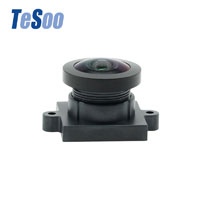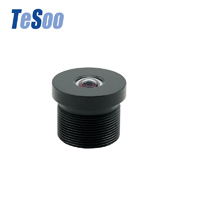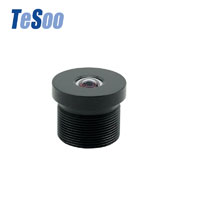The Technology of Vehicle Lens is Constantly Evolving
In recent years, with the upgrade of vehicle intelligence, auto companies are upgrading from low-grade autonomous driving to high-grade autonomous driving. While autonomous driving will put forward higher requirements for active safety functions such as vehicle safety, pedestrian safety and driver monitoring, and ADAS penetration is bound to accelerate.
The vehicle lens in each model is more and more. But basically there will be at least one ADAS camera lens front view and four round-view cameras in the base configuration. If coupled with more and more attention to the driver monitoring camera in recent years, it can be foreseen that in the next few years, the car needs at least 6 cameras, the market prospect is huge.
1. The technology upgrade of vehicle lens
Compared to consumer electronic cameras, in-car cameras work in extremely harsh environments, such as vibration, high temperature, rain and fog, low temperature, and drastic changes in light. For the purpose of driving safety, the vehicle lens needs to obtain stable, reliable and clear data of the surrounding environment in each of the above working conditions.
Therefore, with the improvement of automotive industry technology, the related performance requirements of on-board cameras will be more and more stringent. The on-board camera is required to be able to work continuously in the environment of -40℃~85℃, can not be affected by moisture immersion, antimagnetic and seismic, the service life needs to reach 8~10 years. In addition, for safety reasons, in-car cameras need to work even when power is interrupted for a short time.
In addition, high dynamic range, night vision, LED flicker suppression and other features will continue to spread.
At present, the functions of vehicle lenses require the following performance: on-board cameras often also need to have night vision function, which can suppress the noise of low-illumination photography, and still have excellent performance in dark light conditions. The horizontal Angle of view should be expanded to 25° to 135° to achieve wide Angle and high resolution around the image. Tesoo, one of the top automotive camera lens manufacturers in China, dedicates to providing high-quality products for our customers.
2. 3D sensing: vehicle lens face recognition and driver monitoring
With the continuous evolution of vehicle intelligence, the vehicle lens is required to quickly sense and deeply identify the surrounding environment of the car body. The vehicle lens needs to simultaneously realize the effect of depth of field measurement while interpreting the environmental information. As the mainstream technical solutions of 3D sensing, structured light and TOF technology have become the focus of technical research for various vehicle lens manufacturers.
At present, 3D sensing technology is mainly applied in the cockpit, for example, more and more attention has been paid to the driver monitoring system in recent years. In addition, face recognition can determine the identity of the driver, the cockpit can be adjusted according to personal habits, and can even achieve anti-theft functions.
Popular Camera Lens
Hot Camera Lens Articles

 English
English 

